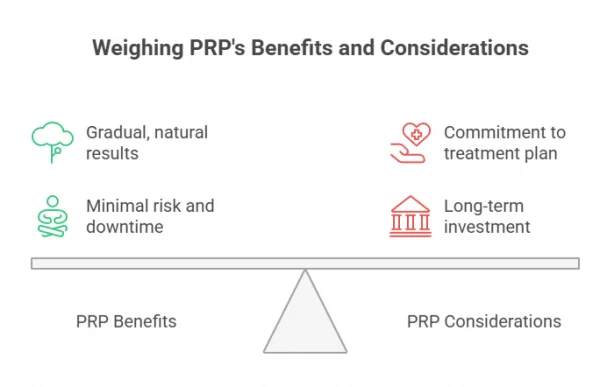The price of PRP therapy has a way of stopping people in their tracks. £300 here, £500 there – and that is before you factor in the three or four sessions most practitioners recommend. It is a lot to swallow, especially when your inner sceptic is whispering, "What if it does nothing?" The truth is, many of us sit right on that fence: drawn in by the promise of natural regeneration, but hesitant about sinking hard-earned money into something we are not sure will deliver.
The agitation comes when you realise what is at stake. Maybe it is the thinning hair you notice in the shower drain every morning, the under-eye shadows that make you look permanently tired, or the frustration of throwing money at creams that never quite touch the deeper issues. There is an emotional weight here, too. Paying hundreds per session is not just about aesthetics – it is about confidence, about feeling like yourself when you catch your reflection, about not quietly resenting the way time has been writing on your skin.
And yet, here is where the conversation changes. Unlike quick fixes or synthetic fillers, PRP works with your body rather than against it, stimulating collagen, improving circulation, and nudging dormant cells back to life. This guide will take you beyond the sticker shock and into the real value equation: where your money goes, how to avoid common pitfalls, and how to decide whether PRP is a savvy long-term investment or simply not the right fit for you.
So what exactly makes PRP cost what it does – and why do clinics charge so differently for the same treatment?
Our Preferred Partner - Cellenis PRP
Not all PRP systems are created equal — and the quality of preparation makes a big difference to outcomes. That’s why many leading clinics choose Cellenis® PRP, a clinically validated system designed to deliver highly concentrated, pure platelet-rich plasma every time. By using a closed, sterile kit and advanced centrifugation, Cellenis® ensures consistency, safety, and optimal platelet yield — the growth factors your skin, hair, or tissue rely on for regeneration. Whether the goal is brighter skin, fuller hair, or faster recovery, Cellenis® PRP offers practitioners and patients confidence in both the science and the results.
What Is PRP Therapy And Why Is It So Popular?
In the world of non-surgical aesthetics and regenerative medicine, few treatments have sparked as much interest as PRP therapy. Short for platelet-rich plasma, this innovative procedure is lauded for its ability to support natural healing, rejuvenate skin, and even stimulate hair growth - all using your body’s own biology.
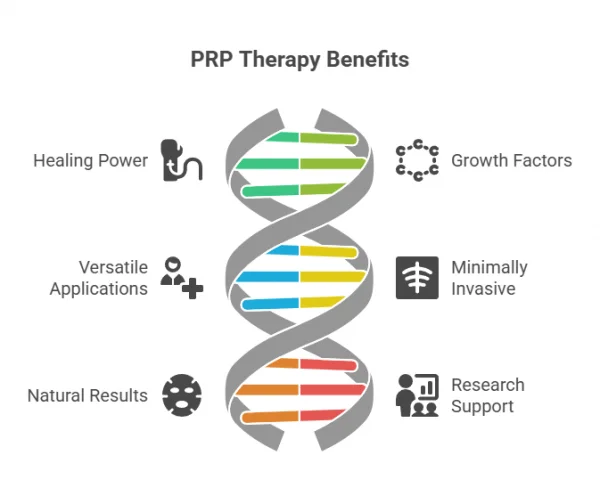
A Natural Way to Rejuvenate and Restore
PRP therapy has earned its place in both clinical and cosmetic settings. Here’s why it’s gaining momentum:
- It harnesses your body’s healing power
PRP is derived from your blood. After drawing a small sample, clinicians use a centrifuge to concentrate the platelets - the blood cells responsible for tissue repair and regeneration. - Rich in growth factors that stimulate recovery
These concentrated platelets release a host of proteins and signalling molecules (like PDGF, TGF-β, VEGF, and EGF), which are key to cell renewal, collagen synthesis, and improved circulation. - Used in both medical and aesthetic fields
Initially developed for wound healing and orthopaedic recovery, PRP is now widely used in aesthetics for skin rejuvenation, acne scars, hair thinning, and even intimate wellness treatments. - Favoured for being minimally invasive
With little to no downtime and a low risk of allergic reactions, since it’s autologous (from your own body), PRP appeals to those seeking gentle, evidence-based alternatives to surgery or synthetic injectables. - Promotes gradual, natural-looking results
Unlike filler or Botox, PRP stimulates your body to repair and regenerate, meaning the improvements develop steadily over weeks, with skin texture, tone and firmness improving session by session. - Backed by a growing body of research
While more high-quality studies are ongoing, current data support its role in tissue healing and cosmetic outcomes, especially when combined with other therapies like microneedling or laser resurfacing. According to NHS guidelines, PRP therapy is considered a safe, minimally invasive procedure that leverages your body’s own growth factors to promote tissue repair and regeneration, with low risk of adverse effects. Clinical studies reviewed by NICE and academic institutions support its use in both medical and aesthetic contexts, highlighting its benefits for skin rejuvenation, hair restoration, and musculoskeletal healing
PRP therapy stands at the intersection of science and self-care. Its appeal lies in its simplicity: no foreign substances, just your body working smarter to heal and renew. It’s little wonder more clinics - and patients - are making it part of their aesthetic plans.
How Much Does PRP Therapy Cost In The UK?
If you’re considering PRP therapy, one of the first practical questions you’ll have is cost. Prices can vary widely depending on location, practitioner expertise, and the type of treatment you’re having. Here’s a clear breakdown of what to expect - and what you’re paying for.
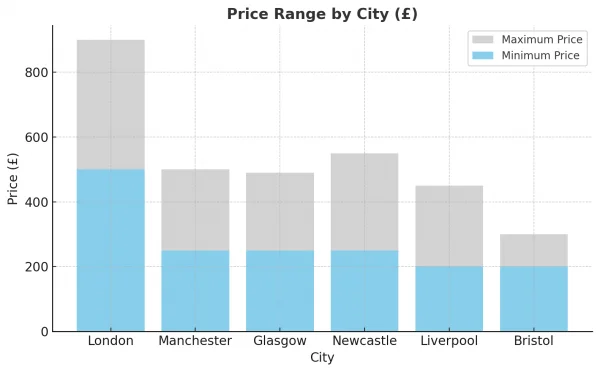
Understanding the Price Range and What Affects It
PRP therapy is priced by session, and multiple treatments may be recommended depending on your needs. Here’s what typically shapes the cost:
- Average costs per session in the UK
Expect to pay between £250 and £450 for facial PRP, around £350–£650 for hair restoration, and £300–£500 for musculoskeletal or joint injections. Some high-end clinics may charge more based on their expertise and facilities. - Geographical location matters
Prices in central London or affluent areas are usually higher due to overheads and demand. Clinics in regional towns often offer more competitive rates. - Type and complexity of treatment
Targeting the under-eye area with PRP may be less expensive than full-face rejuvenation. Hair restoration often involves more time, product, and aftercare, which increases cost. - Number of sessions required
Many providers recommend 3–6 sessions for best results, particularly for skin or hair. Package deals may reduce the cost per session slightly. - Clinic experience and equipment quality
Advanced PRP systems, such as those that separate platelet subtypes or measure cell counts, come at a premium. You’re also paying for clinical skill - something worth investing in. - Is it combined with other treatments?
PRP is often paired with microneedling or laser for enhanced results. These combinations can push up the price but may offer better outcomes long-term. - Consultation and aftercare
Some clinics include consultation and follow-up in the total fee, while others charge separately. Always check what’s included before committing.
PRP therapy in the UK typically falls in the mid-range of aesthetic treatment pricing. While it may feel like an investment, many patients consider it worthwhile for the natural-looking results and low risk of complications.
Is PRP Therapy Worth The Investment?
Cost is only one part of the equation when weighing up a treatment like PRP (Platelet-Rich Plasma). To truly understand its value, it’s worth looking beyond the price tag and considering what PRP offers regarding outcomes, longevity, and patient satisfaction.

A Long-Term Approach to Natural Rejuvenation
PRP isn’t a quick fix - but for many, it offers meaningful, lasting benefits.
- Stimulates your body’s own regenerative processes
Unlike fillers or Botox, which provide instant but temporary results, PRP works by prompting collagen production, tissue repair, and cellular turnover over time. - Minimises the need for frequent top-ups
A course of 3–4 sessions followed by annual maintenance may reduce your reliance on other cosmetic procedures in the long term. - Safe and autologous (from your own body)
Since PRP is made from your blood, the risk of allergic reaction or rejection is exceptionally low - an essential consideration for health-conscious patients. - Visible improvements in skin, hair and recovery
PRP has shown positive effects for various concerns: under-eye circles, skin laxity, acne scars, thinning hair, and joint inflammation. These cross-functional uses add to its value. - Emotional and confidence-related benefits
For many, investing in PRP is about more than appearance. Feeling better in your skin, boosting confidence, or reclaiming control over hair loss carries significant personal value.
Comparing PRP to Alternatives
- PRP vs. fillers or injectables
Fillers may offer faster results but need more frequent maintenance. PRP delivers subtle, cumulative improvement that feels and looks natural. - PRP vs. surgery or hair transplants
While surgical options may offer more dramatic results, they come with downtime, scarring, and higher upfront costs. PRP is a gentle, non-invasive alternative. - PRP as part of a holistic plan
PRP enhances outcomes when paired with other treatments like microneedling, making it an excellent ‘booster’ treatment in many aesthetic programmes.
If you're seeking gradual, natural improvements backed by your body’s biology, PRP therapy offers compelling value. While not inexpensive, many patients consider it an investment in long-term skin health and personal well-being.
Hidden Costs Of PRP And Common Pitfalls To Avoid
While PRP therapy is generally safe and well-tolerated, not every clinic offers the same level of care or transparency. Understanding the hidden costs and potential pitfalls can help you make a confident, informed decision without falling into common traps.
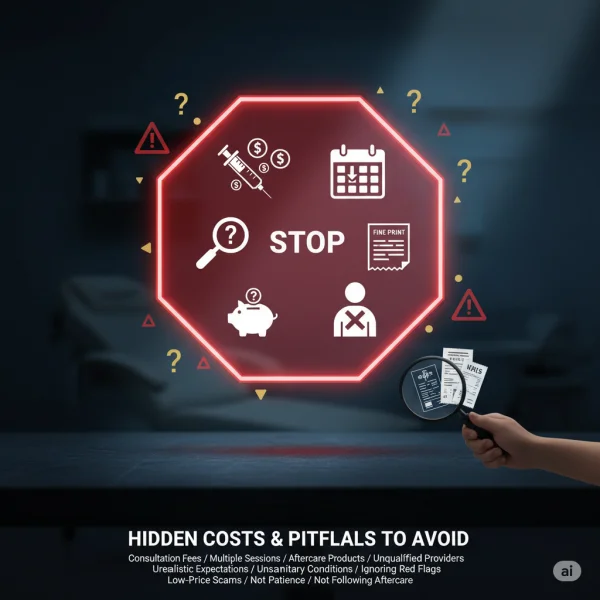
What to Watch Out For Before Booking
Not all PRP treatments are created equal. Here’s what savvy patients should look out for:
- Unusually cheap pricing
If a deal sounds too good to be true, it probably is. Low-cost PRP may indicate diluted platelets, substandard equipment, or rushed treatment protocols. - Lack of clarity around what’s included
Always ask whether your consultation, aftercare, and follow-up appointments are included in the listed price. Some clinics separate these costs, which can add up quickly. - Extra charges for “premium” PRP kits
Some providers upsell specific PRP systems or add-ons without fully explaining the benefit. While advanced kits can enhance results, they should be backed by evidence and explained transparently. - Hidden costs for combination treatments
PRP is often paired with microneedling, laser or other therapies. Clarify whether you’re paying for one service or a bundle, and what each component contributes to your results. - Vague treatment plans
Be wary of clinics that recommend long courses of treatment without assessing your individual needs or discussing results timelines. A good practitioner will tailor the number of sessions based on your goals, skin type, and medical history. - No mention of practitioner experience
The outcome of PRP therapy depends heavily on the technique. Ask about your practitioner’s credentials, how long they’ve been performing PRP, and whether they specialise in aesthetic or medical use. - Outdated equipment or poor hygiene
PRP must be handled in sterile conditions using certified centrifugation systems. If the clinic cannot show you their process or seems dismissive about protocols, take that as a red flag.
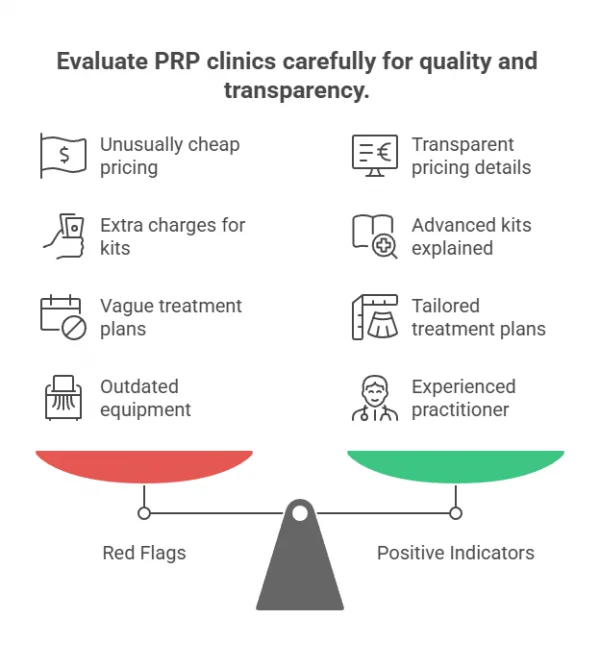
Choosing a PRP provider isn’t just about finding the best price - it’s about understanding the full scope of what you’re getting. Transparency, expertise, and proper clinical standards are non-negotiable when it comes to your skin and health.
Making The Most Of Your PRP Investment
PRP therapy can offer excellent value when approached with care and strategy. To ensure you get the best possible results for your time and money, it’s important to focus not just on the treatment itself, but on how you support your body before, during and after each session.
How to Maximise Results from PRP Therapy
A few smart steps can make a noticeable difference in your outcome and satisfaction:
- Follow pre- and post-treatment advice
Your clinic should provide tailored guidance. This often includes avoiding alcohol, NSAIDs, and strenuous exercise immediately before and after your session to optimise platelet function. - Nourish your body from the inside out
A diet rich in vitamin C, zinc, and protein helps support collagen production and tissue repair. Staying hydrated is also essential for healing and skin plumpness. - Be consistent with your treatment plan
PRP is most effective when delivered in a structured course - usually 3 to 4 sessions spaced several weeks apart. Skipping sessions may reduce efficacy. - Use supportive skincare between sessions
Medical-grade skincare, especially those containing hyaluronic acid, peptides or retinoids (if advised), can complement PRP’s regenerative effects and help maintain results. - Minimise exposure to skin stressors
Limit sun exposure, smoking, and environmental pollutants, undermining collagen production and slowing recovery. - Consider combining treatments
Pairing PRP with microneedling, fractional laser, or dermal fillers (when appropriate) can deliver enhanced results. Your practitioner should advise whether combination therapy suits your goals. - Track progress with photography.
Keeping a visual record helps you see subtle changes that might be hard to notice day-to-day, and helps your practitioner tailor the plan as needed. - Stay realistic and patient.
PRP works gradually. Results can take weeks, particularly with hair restoration or scar reduction. Give your body time to regenerate naturally.
Making the most of your PRP investment involves more than showing up for appointments - it’s about playing an active role in your treatment journey. The long-term payoff can be well worth it with the correct aftercare, realistic expectations, and practitioner guidance.
FAQs About PRP Therapy Costs
Considering PRP therapy and wondering whether the price is justified? You're not alone. Below, we answer some of the most common cost-related questions so that you can confidently make an informed decision.
What influences the cost of PRP therapy?
- The type of PRP used (e.g., leukocyte-rich or customised formulations) and the equipment quality (centrifuge, processing kits) can significantly impact the final price.
- Clinic location, practitioner expertise, and whether the treatment includes consultation or aftercare contribute to cost differences.
Is PRP therapy available on the NHS?
- In rare cases, PRP may be available through the NHS for certain orthopaedic or chronic wound conditions. Still, it’s not offered for aesthetic concerns such as hair loss or skin rejuvenation.
- PRP is typically a private treatment for cosmetic uses and not covered by public healthcare.
Can I use private health insurance for PRP?
- Most UK insurance providers do not cover PRP for aesthetic or elective treatments. However, partial coverage may be possible if the treatment is for joint or injury recovery, depending on your policy. Always check with your insurer.
How many sessions will I need, and is it worth getting a package?
- A typical course involves 3 to 4 sessions, followed by maintenance every 6 to 12 months.
- Many clinics offer package pricing that brings down the per-session cost. If you're committed to a full course, bundles are often more cost-effective.
Is PRP cheaper abroad?
- While PRP therapy can be less expensive in some countries, the savings often come with trade-offs in regulation, aftercare and continuity of care.
- For safety and quality assurance, choosing a registered UK clinic with experienced practitioners is best, even if the upfront cost is higher.
Are there hidden costs I should be aware of?
- Look out for add-ons like “advanced” PRP kits or combination treatments that are not clearly explained.
- Always confirm whether your consultation, patch tests (if needed), and aftercare are included in the quoted price.
Costs can vary - but so can quality. Rather than focusing solely on price, consider the clinic's transparency, safety standards, and reputation. A slightly higher investment can often lead to better, longer-lasting results.
Final Thoughts: Is PRP Right For You - And Your Budget?
Choosing to invest in PRP therapy is a personal decision - and one that’s best made with clarity, realistic expectations, and trusted advice. While it’s not the cheapest option on the market, PRP offers something uniquely compelling: natural, regenerative improvement using your body’s own biology.
Weighing Your Goals Against the Cost
Here’s how to assess whether PRP is the right fit for your aesthetic or wellness journey:
- You’re seeking gradual, natural results
PRP isn’t instant - it works subtly over time by encouraging your skin or hair follicles to heal and renew themselves. - You prefer minimal risk and downtime
With very low likelihood of allergic reaction and virtually no downtime, PRP is an excellent choice for those who value gentle, evidence-informed care. - You’re motivated by long-term benefits, not quick fixes
While results take time, they can be long-lasting - especially with proper aftercare and maintenance. That makes it a smart investment for patients focused on prevention or slow ageing. - You’re prepared to commit to a treatment plan
One session won’t be enough for most people. If you’re open to following through on multiple sessions and ongoing skincare support, PRP can deliver meaningful change. - You’ve ruled out cheaper alternatives that don’t meet your goals
If you’ve tried high-street creams, supplements, or topical treatments without success, PRP may offer the next step in truly effective, non-surgical rejuvenation.
Considerations Before You Book
- Budget realistically
Include the cost of multiple sessions and any recommended combination treatments (e.g. microneedling or skincare products) when comparing providers. - Prioritise quality over price
A slightly more expensive clinic with experienced practitioners and high clinical standards can offer far better results - and peace of mind. - Talk to a trusted professional
The best way to assess suitability is through a consultation where your skin, goals, and budget can all be taken into account.
PRP therapy isn’t for everyone - but for the right candidate, it can be a transformative, worthwhile investment in long-term skin health and self-confidence. It's not about chasing perfection, but about supporting your body’s natural ability to regenerate and glow.
Conclusion
PRP therapy offers a compelling promise: to support your skin or hair’s natural ability to regenerate, without relying on synthetic fillers or invasive procedures. But as with any investment in your wellbeing, the true value lies in knowing what to expect - both in results and in cost.
If you’re drawn to treatments that work with your body rather than against it, and you’re prepared to commit to a personalised plan, PRP can be a powerful option. It’s not the cheapest route - but for many, the long-term benefits in texture, tone, confidence, and care make it worthwhile.
As always, your best next step is to speak with a qualified practitioner - someone who understands your goals, your skin, and your budget. A thoughtful consultation can help you decide if PRP is the right investment for you, or if another approach might better suit your needs. Because the smartest aesthetic choices aren’t just about looking good - they’re about feeling informed, supported, and entirely yourself.
Your PRP Questions
Real Questions from Real People — Answered
Straightforward answers to the questions people like you are asking right now about PRP.

Cost of PRP treatment for hair?
Please give the cost and how many sessions needed to prevent complete hair loss and new hair
Hair loss.
Dear reader My name is Mo I'm interested to have prp treatment in your clinic and I have some questions How many ml of prp i will get injured ? Did you analyse prp There any other services after the treatment is done Thank you
To view all the PRP questions, please click here.
Or click here to ask your own question.
Find A Verified Clinic
Trusted PRP Experts, Local to You
Easily connect with qualified, verified professionals for safe, reliable treatment.

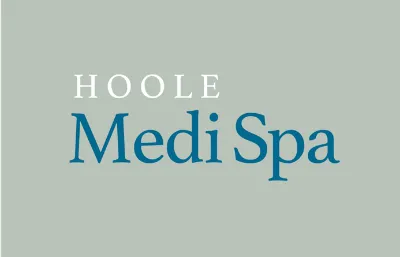
Hoole Medispa
51 Hoole Road, Hoole, Chester, CH2 3NH
Welcome to Hoole Spa and Aesthetics situated in the beautiful Grade II listed building in the suburbs of Hoole, Chester.
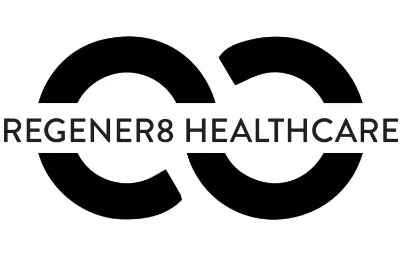
Regener8 Healthcare
42 Hewell Road, Barnt Green, Birmingham, B45 8NF
Regener8 Healthcare brings together a team of highly qualified specialists, who are all passionate about aesthetics, longevity and wellness treatments.
To find a PRP clinic near you, please click here.



